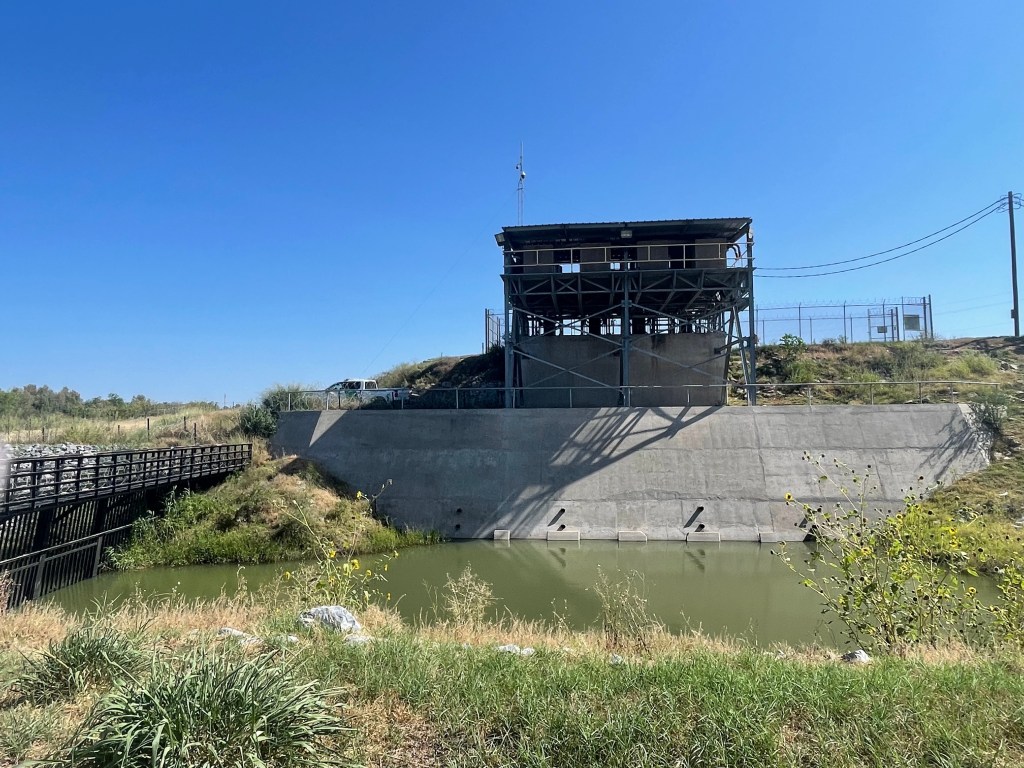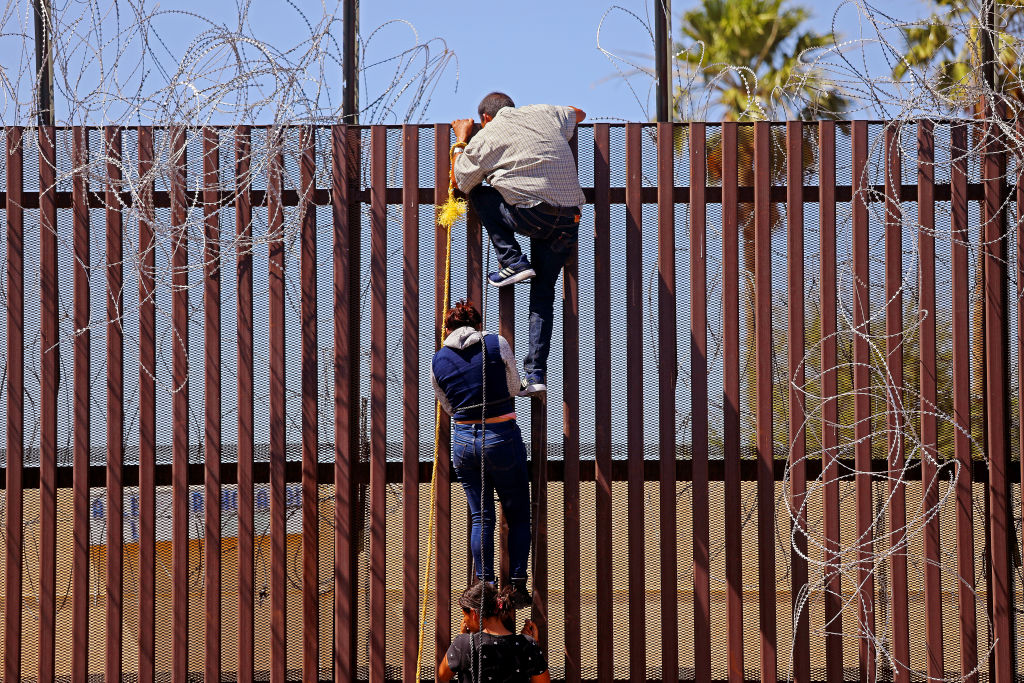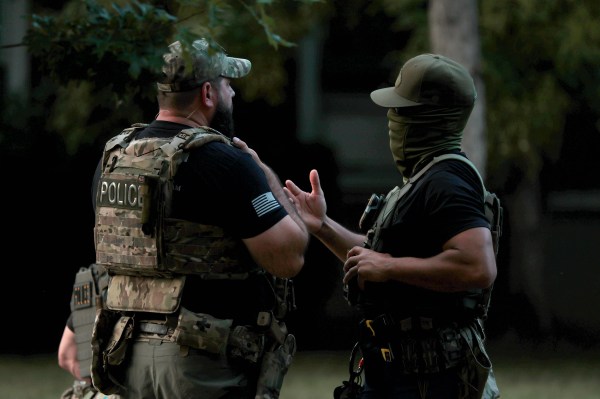McALLEN, Texas—Republican presidential candidates are vowing to finish former President Donald Trump’s long-promised wall along the U.S.-Mexico border. But a host of issues—including securing land and navigating difficult terrain—makes it much more complicated than campaign promises make it sound.
The farther west you go along the southern border’s nearly 2,000 miles, the more likely you’ll encounter physical border barriers. Around 565—28 percent—of those 2,000 miles are on federal property, mostly in California, Arizona, and New Mexico.
But it’s different in Texas.
There, private citizens hold the deeds to thousands of parcels along the Rio Grande, which comprises the U.S.-Mexico border in most places. Treaty provisions (a 1970 U.S.-Mexico treaty prevents barriers from obstructing the flow of the Rio Grande), tribal land, floodplains, and environmental habitats restrict where physical barriers can go. In the Rio Grande Valley, barriers often stand anywhere from 50 feet to a mile away from the river.
That leaves an estimated 40,000 acres of U.S. land between the physical barriers and the river, according to the U.S. Government Accountability Office (GAO)—and plenty of complications for businesses and private residences between a U.S. wall and the actual border.
Building barriers.
The first pushes to build physical barriers along the border came with the bipartisan Illegal Immigration Reform and Immigrant Responsibility Act of 1996 (IIRIRA), and again in the 2006 Secure Fence Act, according to the nonpartisan Congressional Research Service.
Those measures called for two layers of reinforced fencing—parallel fencing with a strip in between for Border Patrol to move—and additional physical barriers. By 2017 the federal government had constructed more than 650 miles of barriers, mostly in California, Arizona, and New Mexico. (The Bush administration oversaw the completion of over 500 miles of barriers by 2008, with 135 miles of that pre-dating the administration. The Obama administration oversaw construction of nearly 130 miles of barriers.)
But plans for two layers of fencing often gave way to vehicle barriers, meant to slow down drug smugglers but that still allowed people to pass through on foot. By early 2017, much of the rest became single-layer pedestrian fencing. A Customs and Border Protection (CBP) press release said that when Donald Trump took office the wall was “neglected, easily compromised, and sparsely constructed,” and “needed a reinvestment in 2017.”
Coming off his 2016 promise to “build the wall,” the Trump administration constructed more miles of border fencing than any other presidential administration (though getting funding included a 35-day government shutdown and a national emergency declaration that enabled controversial accounting moves). By the time he left office in 2021, Trump’s administration had built 458 miles of border wall, 373 of which replaced some kind of previous barrier, according to FactCheck.org. And around 200 miles of vehicle barriers were replaced with his signature 18-to 30-foot high bollard barriers. When he left office, the wall stretched around 40 miles longer.
Still, vast stretches of the border have no physical barriers, particularly in the eastern half. In Texas, the longest contiguous stretch of land without physical barriers is more than 600 miles. There were around 4,900 individual parcels of property within 500 feet of the actual U.S.-Mexico border in Texas alone most of which is likely privately owned, USA Today reported in 2018.
Getting the land.
The federal government can secure private land along the border, but the process can be complicated. Federal authorities can first seek to negotiate with private property owners for the land in question. The attorney general has to issue a prior written approval of the purpose for the land. If the landowner agrees, the process resembles a typical land purchase between private parties.
If the landowner doesn’t want to give up the property, the government can use eminent domain, which involves “condemning” or taking the property for public use and giving the owner “just compensation” in return (though landowners have complained of being lowballed). That’s a complicated and time-consuming process.
In Texas, it often involves an additional complication: unclear ownership thanks to lost and missing land records.
“You need tens of thousands of man hours to go through all of that filing process,” David Bier, an immigration analyst with the libertarian Cato Institute, says. “It’s not impossible if you really want to get it done but it does require some resources and some time and prioritization.”
Even landowners who work with the government find themselves embroiled in complications, such as working through access to water irrigation pipelines, fencing for cattle, or securing access if a border wall will divide their property.
That’s the case for the water utility in Hidalgo County, near McAllen. One of its water pumps sits between the border wall and the Rio Grande—barely a stone’s throw from Reynosa, Mexico, on the other side. But the wall doesn’t mark the actual border. That’s at some indiscernible middle point of the river.
Othal Brand Jr., the general manager and president of Hidalgo County Water Improvement District No. 3, says he frequently runs into issues with the cartels in control of that section of the border. Some of his employees have been shot at after passing through a gate in the wall to check on the water pump, he says. If they see members of the cartel when they show up, the employees turn around and come back later.

The border wall, post-Trump.
On his first day in office, President Joe Biden ordered the halt of Trump’s border wall but the administration has resumed construction in some areas, primarily in Arizona and California. Critics say such issues show border walls don’t deliver all their proponents’ promises. “Every time that the fence has been deployed its shortcomings have been exposed and the response is, well, we need to build more fence,” Bier says.
Illicit crossings continue: Barriers are tunneled under, climbed over, and cut through with power tools. Since the 1990s, more than 200 tunnels, typically used by drug smugglers and cartels, have been discovered. In 2019, one of those tunnels was found in Hidalgo, just 2,000 feet from a pump house owned by the Hidalgo County water authority.
Border wall supporters, meanwhile, say barriers are still useful to a Border Patrol force stretched too thin: “This high barrier will give us more time to react,” Fidel Baca, a border patrol agent, said in a CBP report. Barriers, along with other technology, operate as a force multiplier.
Bier remembers when Border Patrol used to talk more about incorporating strategic gaps in the wall, or about how physical barriers were unnecessary in areas featuring natural barriers like mountains and the Rio Grande.
That changed when Trump declared the wall an “impassable physical barrier” in a 2017 executive order.
“The goalposts keep getting shifted every time it becomes clear that you can’t seal off the border this way,” Bier said.






Please note that we at The Dispatch hold ourselves, our work, and our commenters to a higher standard than other places on the internet. We welcome comments that foster genuine debate or discussion—including comments critical of us or our work—but responses that include ad hominem attacks on fellow Dispatch members or are intended to stoke fear and anger may be moderated.
With your membership, you only have the ability to comment on The Morning Dispatch articles. Consider upgrading to join the conversation everywhere.